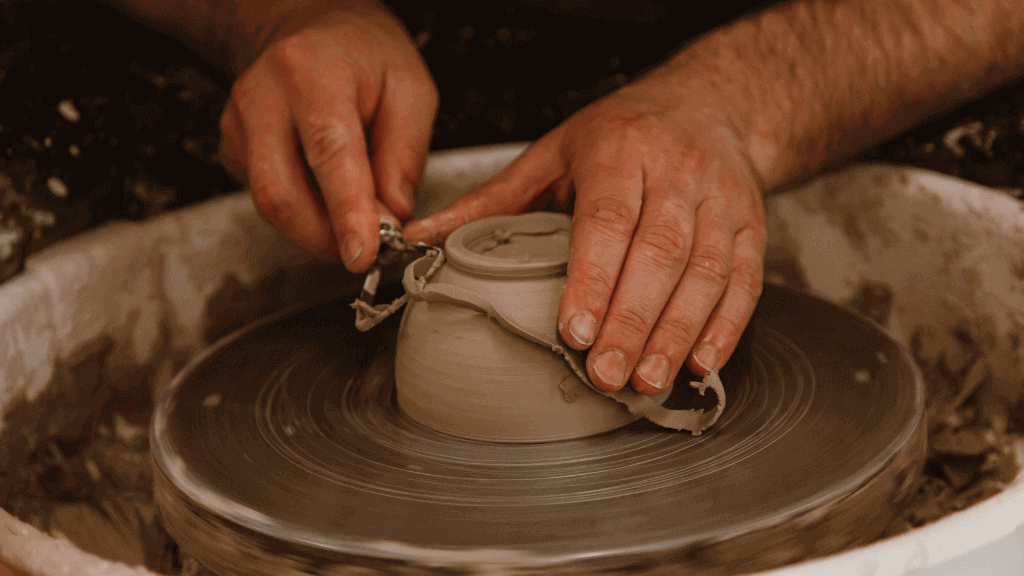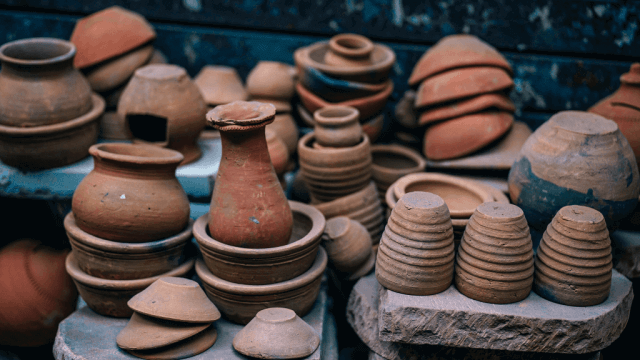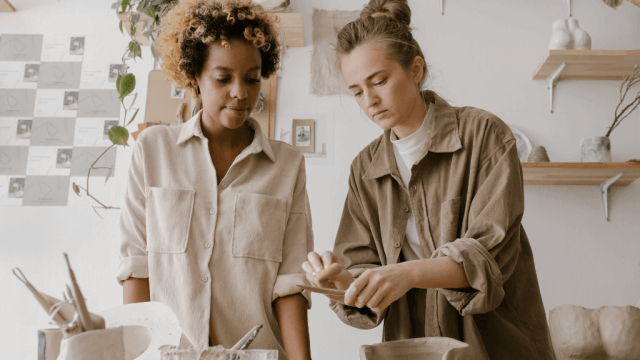Yes, some types of clay can be baked in a regular home oven. For example, OvenCraft clay and some modeling clays can be baked in a regular oven. However, standard pottery clay requires much higher temperatures than a home oven can reach. It is important to note that baking pottery in a home oven may not produce the same results as firing it in an industrial kiln.
What temperature should the regular oven be set to when baking pottery clay?
The temperature to set the oven when baking pottery clay depends on the type of clay. For Super Sculpey, preheat to 275 degrees F (135 C) and bake for 15 minutes per quarter inch of thickness. For other types of clay, such as those used in pottery, preheat your oven to 325°F and bake for 30 minutes. Note that some sources suggest pre-drying clay pieces in a kitchen oven set to 190 degrees F before firing without a kiln.
Can all types of pottery clay be baked in a regular oven, or are there some that require a kiln?
Not all types of pottery clay can be baked in a regular oven. Natural clay requires a kiln to fire and cure, and it must be heated to much higher temperatures than polymer clay. Standard pottery clay is also not the best option for oven-finished ceramics. However, there are some types of hardening clay that can be baked in a regular home oven rather than through kiln fire or air drying. If you don’t have access to a kiln, you can use types of clay that you can “bake” at low temperatures.
How long should the pottery clay be baked for in a regular oven?
The baking time for pottery clay in a regular oven depends on the thickness of the piece. A general rule of thumb is to bake for 15 minutes per quarter inch of thickness. For example, a piece that is 1/2″ thick should be baked for 30 minutes. Another source suggests preheating the oven to 325°F and baking for 30 minutes. It’s important to set the correct temperature and bake your pottery piece for no less than half an hour. However, standard pottery clay is not recommended for oven-finished ceramics.
Are there any special precautions that need to be taken when baking pottery clay in a regular oven, such as placing it on a certain type of surface or covering it with foil?
When baking pottery clay in a regular oven, there are some special precautions that should be taken. According to , the clay needs at least 15 minutes to cure properly, and strength increases as the baking time increases. Always be certain to first check the oven’s temperature. suggests using heat-resistant gloves and protective eye gear when firing clay at home in a microwave kiln. There is no need to break up dry clay, but it must first be totally dry before reprocessing it. Be sure it has no plaster chips in it – plaster causes. When working with ceramics, do not eat, drink or smoke in glazing area and scrub your hands thoroughly after glazing according to. You can safely bake polymer clay in your home oven, taking care to properly ventilate the room according to.
What are some common mistakes people make when baking pottery clay in a regular oven, and how can they be avoided?
Baking pottery clay in a regular oven can be problematic. Some common mistakes include:
• Using an inaccurate oven temperature setting
• Using an improper baking surface
• Placing the clay too close to the heating element
• Not firing the pottery at a high enough temperature, which leaves it fragile and weak compared to kiln-fired pottery
To avoid these issues, it is best to use a kiln for firing pottery. If that is not possible, you can try pit firing your pots without glaze on them. However, due to the lower temperatures of a regular oven, your pottery will not get the glassy look that kiln-dried pottery gets from chemical changes during firing.











